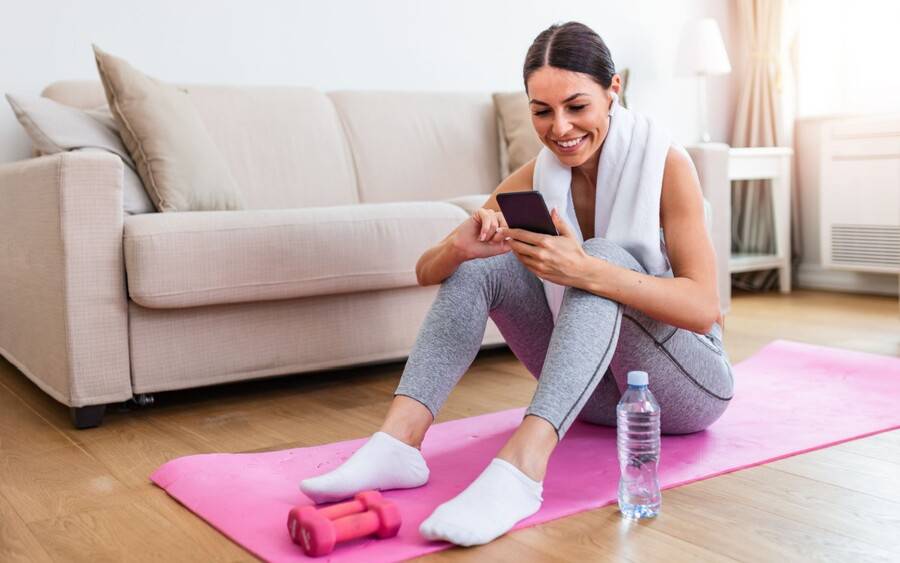How to Stay Consistent with Exercise: 7 Tips that Work
Practical tips to help you stay active every day

Practical tips to help you stay active every day
Regular exercise is one of the best things you can do for yourself. It helps you stay at a healthy weight, feel happier and keep your heart and lungs working their best. Plus, it makes your bones and muscles stronger, lowers your risk for long-term health problems, eases stress and helps you sleep more soundly.
For older adults or those living with chronic conditions like diabetes or arthritis, regular exercise is even more important to maintain mobility and overall health.
However, knowing these benefits is not always enough. The real challenge is often staying consistent with your exercise routine.
“For many people, that’s the hard part,” says James Italiano, MD, a family medicine physician at Scripps Coastal Medical Center Oceanside. “It can be a challenge to find time to fit exercise into a busy schedule and, even if you do have time, you may be too tired at the end of a busy day to even think about working out.”
You might find that regular exercise can be enjoyable once you start. As you notice the benefits, like a better mood, more energy and improved health, you may wonder how you lived without it.
If starting or staying consistent feels hard, remember that small steps matter. Pick exercises and activities you like. Try to make movement a normal part of your daily routine. Your body and mind will thank you.
These tips can help you build a consistent workout routine:
1. Choose exercises you actually enjoy
It sounds simple, but too many people push themselves to do exercises they don’t enjoy just because they think they're “supposed to.” That approach isn’t sustainable and can make it harder to stick with a routine.
Make it enjoyable. If you like to exercise outside, go ahead and do it.
“If you don’t enjoy working out on the treadmill or bike in the gym, try running or bike riding outdoors,” Dr. Italiano says.
If group exercise classes are not your thing, you can go at your own pace. Try an elliptical trainer or a recumbent bike.
And keep an open mind. You might be surprised by what you end up enjoying.
“Don’t completely write off activities you think you don’t enjoy,” Dr. Italiano adds. “Swimmers who loathe laps in a chlorinated pool may love being in the water at La Jolla Cove. You may find walking on the beach is more enjoyable than the treadmill.”
2. Use fitness trackers and apps to stay accountable
Tracking your progress can be a powerful way to stay motivated. Whether it’s a smartwatch, app or notebook recording your daily physical activity builds a sense of accomplishment.
Seeing progress boosts your confidence and helps you stay on track. Sharing your workouts on social media or with friends can keep you motivated. Positive feedback from others can give you that extra push.
Popular apps like MyFitnessPal, Strava and Apple Fitness+ provide guided workouts and personal tracking. Some include strength training programs and routines designed for different fitness levels.
3. Schedule workouts like appointments
Add your workouts to your calendar just like any other important meeting. When it’s scheduled, it becomes part of your day – not something you try to squeeze in.
Even 20 minutes of focused movement can provide benefits. Research shows that short, regular workouts can be as effective as longer ones.
4. Break exercise into mini workouts
You don’t need to work out for a full hour to see results. Research shows that splitting your exercise into shorter bursts, like three 10-minute sessions a day, can work just as well as a 30-minute workout.
These mini workouts are especially helpful for busy parents or people working from home. A quick morning walk, midday stretches and some evening squats or core work can add up to big results.
5. Find a workout buddy
Exercising with a partner makes it more fun and harder to skip. Whether it’s a friend, family member or co-worker, having someone to check in with boosts accountability.
If you have kids, involve them too. Dance together, play a game of tag or go for a family walk. These moments keep everyone active and build lasting habits.
6. Mix up your routine to avoid boredom
Doing the same thing every day can get boring quickly. Changing your workout routine keeps your mind active and your body challenged.
Try a new activity. Sign up for a dance class. Switch from running to biking or hiking. Add some strength training to your week. Variety helps prevent injuries. It also gives different muscle groups time to recover.
When trying something new, start slow, listen to your body, and use proper form to help avoid injury and keep it enjoyable.
7. Find your balance: Rest when your body needs it
Pushing too hard without rest can backfire. Too much physical activity without recovery may lead to fatigue, soreness or injury.
Know your limits. If you feel unusually tired, sore or start experiencing frequent illnesses, it may be time to take a break. Your long-term health depends on finding the right balance between activity and rest.
Need help creating a plan that’s right for you?
Talk to your primary care doctor about your goals and any health concerns. Together, you can create a fitness routine that fits your lifestyle and supports your long-term health and wellness.